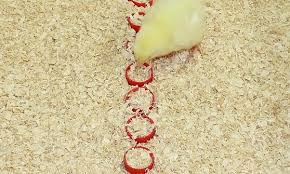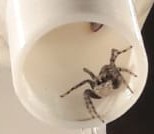Research lines
Numerical Abilities
 Number-space mapping
Number-space mapping
Usually adult humans think about numbers as been represented onto a mental line oriented from left (small numbers) to right (large numbers). The influence of the educational factors in determining the orientation of the human mental number line has been extensively debated. We propose a series of studies investigating the effects of language and culture in determining the origin of the orientation of the mental number line.
 Ordinal Abilities
Ordinal Abilities
Ordinality can be considered as the capability of identifying an element in a series of target elements on the basis of its ordinal position. Which hemisphere is in charge of processing this information? Are the two hemispheres processing distinct characteristics of the information (spatial and/or numerical)? Is ordinality related to the level of brain lateralization, and to what extent?
Context related responses
 Can an animal learn to respond in different ways according to the different contexts? We propose a series of experiments investigating whether day-old domestic chicks can learn to behave differently (for example responding by choosing either the larger or the smaller number), in different environments.
Can an animal learn to respond in different ways according to the different contexts? We propose a series of experiments investigating whether day-old domestic chicks can learn to behave differently (for example responding by choosing either the larger or the smaller number), in different environments.
Social cognition and visual recognition
 Young chicks are highly social animals and they have a natural tendency to create a social bond with their rearing companions. We propose different experiments for investigating variables involved in social cognition: are there any characteristic of the social stimuli which enhance the recognition? Is there an effect of the rearing conditions? Can chicks recognize also non-naturalistic stimuli (e.g. objects, bi-dimensional stimuli)?
Young chicks are highly social animals and they have a natural tendency to create a social bond with their rearing companions. We propose different experiments for investigating variables involved in social cognition: are there any characteristic of the social stimuli which enhance the recognition? Is there an effect of the rearing conditions? Can chicks recognize also non-naturalistic stimuli (e.g. objects, bi-dimensional stimuli)?
Visual discrimination and learning
 The most impressive feat of jumping spiders is without a doubt their vision. Each pair of their eight eyes has a specific role, that contributes to a 360° visual field with a high acuity fovea of around 10°. Nevertheless, not a lot is known about how these spiders analyze and categorize the visual information, or even if they can use it flexibly, outside of their normal behavioural pattern. We are using conditioning methods in order to understand what visual stimuli a spider can or cannot discriminate.
The most impressive feat of jumping spiders is without a doubt their vision. Each pair of their eight eyes has a specific role, that contributes to a 360° visual field with a high acuity fovea of around 10°. Nevertheless, not a lot is known about how these spiders analyze and categorize the visual information, or even if they can use it flexibly, outside of their normal behavioural pattern. We are using conditioning methods in order to understand what visual stimuli a spider can or cannot discriminate.
Praying mantis do not see as well as jumping spiders, but their visual system is equally impressive. Even without color perception, they seem able to discriminate visual stimuli on the basis of their appearance and of their movement. We are using computerized stimuli to understand how these insects perceive movement and how they categorize it.
Spatial cognition
 Jumping spiders are active hunters, that can stalk a high variety of preys, even some that could potentially be dangerous for them, with a lot of different strategies. To achieve such a marvelous task, they seem to use their clear understanding of the surroundings, in order to plan detours and so be able to reach their preys unseen. We are performing a series of experiments in order to understand how they perceive the environment and how they orient themselves.
Jumping spiders are active hunters, that can stalk a high variety of preys, even some that could potentially be dangerous for them, with a lot of different strategies. To achieve such a marvelous task, they seem to use their clear understanding of the surroundings, in order to plan detours and so be able to reach their preys unseen. We are performing a series of experiments in order to understand how they perceive the environment and how they orient themselves.





